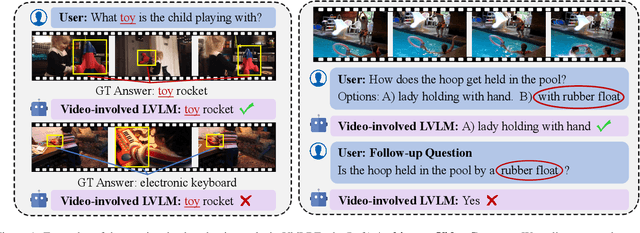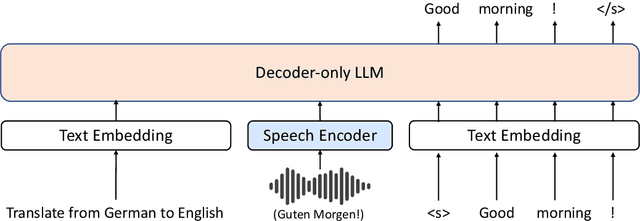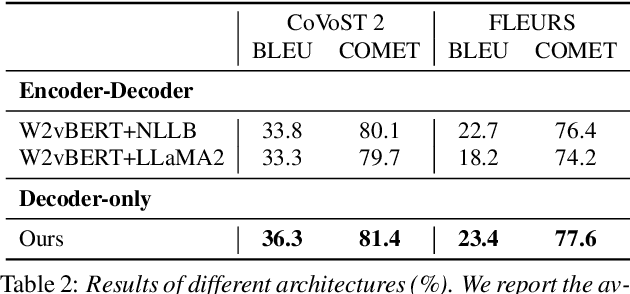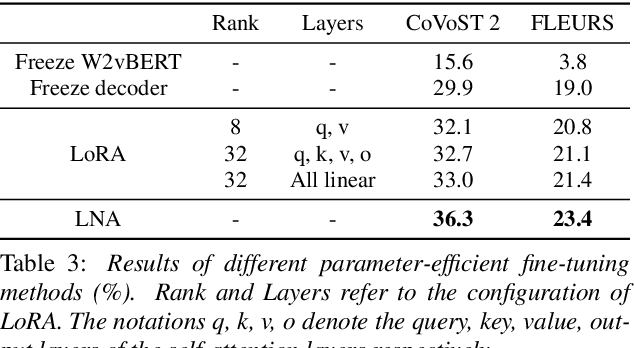Hui Lu
FOAM: A General Frequency-Optimized Anti-Overlapping Framework for Overlapping Object Perception
Jun 16, 2025Abstract:Overlapping object perception aims to decouple the randomly overlapping foreground-background features, extracting foreground features while suppressing background features, which holds significant application value in fields such as security screening and medical auxiliary diagnosis. Despite some research efforts to tackle the challenge of overlapping object perception, most solutions are confined to the spatial domain. Through frequency domain analysis, we observe that the degradation of contours and textures due to the overlapping phenomenon can be intuitively reflected in the magnitude spectrum. Based on this observation, we propose a general Frequency-Optimized Anti-Overlapping Framework (FOAM) to assist the model in extracting more texture and contour information, thereby enhancing the ability for anti-overlapping object perception. Specifically, we design the Frequency Spatial Transformer Block (FSTB), which can simultaneously extract features from both the frequency and spatial domains, helping the network capture more texture features from the foreground. In addition, we introduce the Hierarchical De-Corrupting (HDC) mechanism, which aligns adjacent features in the separately constructed base branch and corruption branch using a specially designed consistent loss during the training phase. This mechanism suppresses the response to irrelevant background features of FSTBs, thereby improving the perception of foreground contour. We conduct extensive experiments to validate the effectiveness and generalization of the proposed FOAM, which further improves the accuracy of state-of-the-art models on four datasets, specifically for the three overlapping object perception tasks: Prohibited Item Detection, Prohibited Item Segmentation, and Pneumonia Detection. The code will be open source once the paper is accepted.
SCORPIO: Serving the Right Requests at the Right Time for Heterogeneous SLOs in LLM Inference
May 29, 2025Abstract:Existing Large Language Model (LLM) serving systems prioritize maximum throughput. They often neglect Service Level Objectives (SLOs) such as Time to First Token (TTFT) and Time Per Output Token (TPOT), which leads to suboptimal SLO attainment. This paper introduces SCORPIO, an SLO-oriented LLM serving system designed to maximize system goodput and SLO attainment for workloads with heterogeneous SLOs. Our core insight is to exploit SLO heterogeneity for adaptive scheduling across admission control, queue management, and batch selection. SCORPIO features a TTFT Guard, which employs least-deadline-first reordering and rejects unattainable requests, and a TPOT Guard, which utilizes a VBS-based admission control and a novel credit-based batching mechanism. Both guards are supported by a predictive module. Evaluations demonstrate that SCORPIO improves system goodput by up to 14.4X and SLO adherence by up to 46.5% compared to state-of-the-art baselines.
LONGER: Scaling Up Long Sequence Modeling in Industrial Recommenders
May 07, 2025Abstract:Modeling ultra-long user behavior sequences is critical for capturing both long- and short-term preferences in industrial recommender systems. Existing solutions typically rely on two-stage retrieval or indirect modeling paradigms, incuring upstream-downstream inconsistency and computational inefficiency. In this paper, we present LONGER, a Long-sequence Optimized traNsformer for GPU-Efficient Recommenders. LONGER incorporates (i) a global token mechanism for stabilizing attention over long contexts, (ii) a token merge module with lightweight InnerTransformers and hybrid attention strategy to reduce quadratic complexity, and (iii) a series of engineering optimizations, including training with mixed-precision and activation recomputation, KV cache serving, and the fully synchronous model training and serving framework for unified GPU-based dense and sparse parameter updates. LONGER consistently outperforms strong baselines in both offline metrics and online A/B testing in both advertising and e-commerce services at ByteDance, validating its consistent effectiveness and industrial-level scaling laws. Currently, LONGER has been fully deployed at more than 10 influential scenarios at ByteDance, serving billion users.
VidLBEval: Benchmarking and Mitigating Language Bias in Video-Involved LVLMs
Feb 23, 2025



Abstract:Recently, Large Vision-Language Models (LVLMs) have made significant strides across diverse multimodal tasks and benchmarks. This paper reveals a largely under-explored problem from existing video-involved LVLMs - language bias, where models tend to prioritize language over video and thus result in incorrect responses. To address this research gap, we first collect a Video Language Bias Evaluation Benchmark, which is specifically designed to assess the language bias in video-involved LVLMs through two key tasks: ambiguous video contrast and interrogative question probing. Accordingly, we design accompanied evaluation metrics that aim to penalize LVLMs being biased by language. In addition, we also propose Multi-branch Contrastive Decoding (MCD), introducing two expert branches to simultaneously counteract language bias potentially generated by the amateur text-only branch. Our experiments demonstrate that i) existing video-involved LVLMs, including both proprietary and open-sourced, are largely limited by the language bias problem; ii) our MCD can effectively mitigate this issue and maintain general-purpose capabilities in various video-involved LVLMs without any additional retraining or alteration to model architectures.
Large Memory Network for Recommendation
Feb 08, 2025



Abstract:Modeling user behavior sequences in recommender systems is essential for understanding user preferences over time, enabling personalized and accurate recommendations for improving user retention and enhancing business values. Despite its significance, there are two challenges for current sequential modeling approaches. From the spatial dimension, it is difficult to mutually perceive similar users' interests for a generalized intention understanding; from the temporal dimension, current methods are generally prone to forgetting long-term interests due to the fixed-length input sequence. In this paper, we present Large Memory Network (LMN), providing a novel idea by compressing and storing user history behavior information in a large-scale memory block. With the elaborated online deployment strategy, the memory block can be easily scaled up to million-scale in the industry. Extensive offline comparison experiments, memory scaling up experiments, and online A/B test on Douyin E-Commerce Search (ECS) are performed, validating the superior performance of LMN. Currently, LMN has been fully deployed in Douyin ECS, serving millions of users each day.
Adaptive Domain Scaling for Personalized Sequential Modeling in Recommenders
Feb 08, 2025



Abstract:Users generally exhibit complex behavioral patterns and diverse intentions in multiple business scenarios of super applications like Douyin, presenting great challenges to current industrial multi-domain recommenders. To mitigate the discrepancies across diverse domains, researches and industrial practices generally emphasize sophisticated network structures to accomodate diverse data distributions, while neglecting the inherent understanding of user behavioral sequence from the multi-domain perspective. In this paper, we present Adaptive Domain Scaling (ADS) model, which comprehensively enhances the personalization capability in target-aware sequence modeling across multiple domains. Specifically, ADS comprises of two major modules, including personalized sequence representation generation (PSRG) and personalized candidate representation generation (PCRG). The modules contribute to the tailored multi-domain learning by dynamically learning both the user behavioral sequence item representation and the candidate target item representation under different domains, facilitating adaptive user intention understanding. Experiments are performed on both a public dataset and two billion-scaled industrial datasets, and the extensive results verify the high effectiveness and compatibility of ADS. Besides, we conduct online experiments on two influential business scenarios including Douyin Advertisement Platform and Douyin E-commerce Service Platform, both of which show substantial business improvements. Currently, ADS has been fully deployed in many recommendation services at ByteDance, serving billions of users.
CSPCL: Category Semantic Prior Contrastive Learning for Deformable DETR-Based Prohibited Item Detectors
Jan 28, 2025



Abstract:Prohibited item detection based on X-ray images is one of the most effective security inspection methods. However, the foreground-background feature coupling caused by the overlapping phenomenon specific to X-ray images makes general detectors designed for natural images perform poorly. To address this issue, we propose a Category Semantic Prior Contrastive Learning (CSPCL) mechanism, which aligns the class prototypes perceived by the classifier with the content queries to correct and supplement the missing semantic information responsible for classification, thereby enhancing the model sensitivity to foreground features.To achieve this alignment, we design a specific contrastive loss, CSP loss, which includes Intra-Class Truncated Attraction (ITA) loss and Inter-Class Adaptive Repulsion (IAR) loss, and outperforms classic N-pair loss and InfoNCE loss. Specifically, ITA loss leverages class prototypes to attract intra-class category-specific content queries while preserving necessary distinctiveness. IAR loss utilizes class prototypes to adaptively repel inter-class category-specific content queries based on the similarity between class prototypes, helping disentangle features of similar categories.CSPCL is general and can be easily integrated into Deformable DETR-based models. Extensive experiments on the PIXray and OPIXray datasets demonstrate that CSPCL significantly enhances the performance of various state-of-the-art models without increasing complexity.The code will be open source once the paper is accepted.
Investigating Decoder-only Large Language Models for Speech-to-text Translation
Jul 03, 2024



Abstract:Large language models (LLMs), known for their exceptional reasoning capabilities, generalizability, and fluency across diverse domains, present a promising avenue for enhancing speech-related tasks. In this paper, we focus on integrating decoder-only LLMs to the task of speech-to-text translation (S2TT). We propose a decoder-only architecture that enables the LLM to directly consume the encoded speech representation and generate the text translation. Additionally, we investigate the effects of different parameter-efficient fine-tuning techniques and task formulation. Our model achieves state-of-the-art performance on CoVoST 2 and FLEURS among models trained without proprietary data. We also conduct analyses to validate the design choices of our proposed model and bring insights to the integration of LLMs to S2TT.
VideoMambaPro: A Leap Forward for Mamba in Video Understanding
Jun 27, 2024Abstract:Video understanding requires the extraction of rich spatio-temporal representations, which transformer models achieve through self-attention. Unfortunately, self-attention poses a computational burden. In NLP, Mamba has surfaced as an efficient alternative for transformers. However, Mamba's successes do not trivially extend to computer vision tasks, including those in video analysis. In this paper, we theoretically analyze the differences between self-attention and Mamba. We identify two limitations in Mamba's token processing: historical decay and element contradiction. We propose VideoMambaPro (VMP) that solves the identified limitations by adding masked backward computation and elemental residual connections to a VideoMamba backbone. VideoMambaPro shows state-of-the-art video action recognition performance compared to transformer models, and surpasses VideoMamba by clear margins: 7.9% and 8.1% top-1 on Kinetics-400 and Something-Something V2, respectively. Our VideoMambaPro-M model achieves 91.9% top-1 on Kinetics-400, only 0.2% below InternVideo2-6B but with only 1.2% of its parameters. The combination of high performance and efficiency makes VideoMambaPro an interesting alternative for transformer models.
Addressing Index Collapse of Large-Codebook Speech Tokenizer with Dual-Decoding Product-Quantized Variational Auto-Encoder
Jun 05, 2024



Abstract:VQ-VAE, as a mainstream approach of speech tokenizer, has been troubled by ``index collapse'', where only a small number of codewords are activated in large codebooks. This work proposes product-quantized (PQ) VAE with more codebooks but fewer codewords to address this problem and build large-codebook speech tokenizers. It encodes speech features into multiple VQ subspaces and composes them into codewords in a larger codebook. Besides, to utilize each VQ subspace well, we also enhance PQ-VAE via a dual-decoding training strategy with the encoding and quantized sequences. The experimental results demonstrate that PQ-VAE addresses ``index collapse" effectively, especially for larger codebooks. The model with the proposed training strategy further improves codebook perplexity and reconstruction quality, outperforming other multi-codebook VQ approaches. Finally, PQ-VAE demonstrates its effectiveness in language-model-based TTS, supporting higher-quality speech generation with larger codebooks.
 Add to Chrome
Add to Chrome Add to Firefox
Add to Firefox Add to Edge
Add to Edge